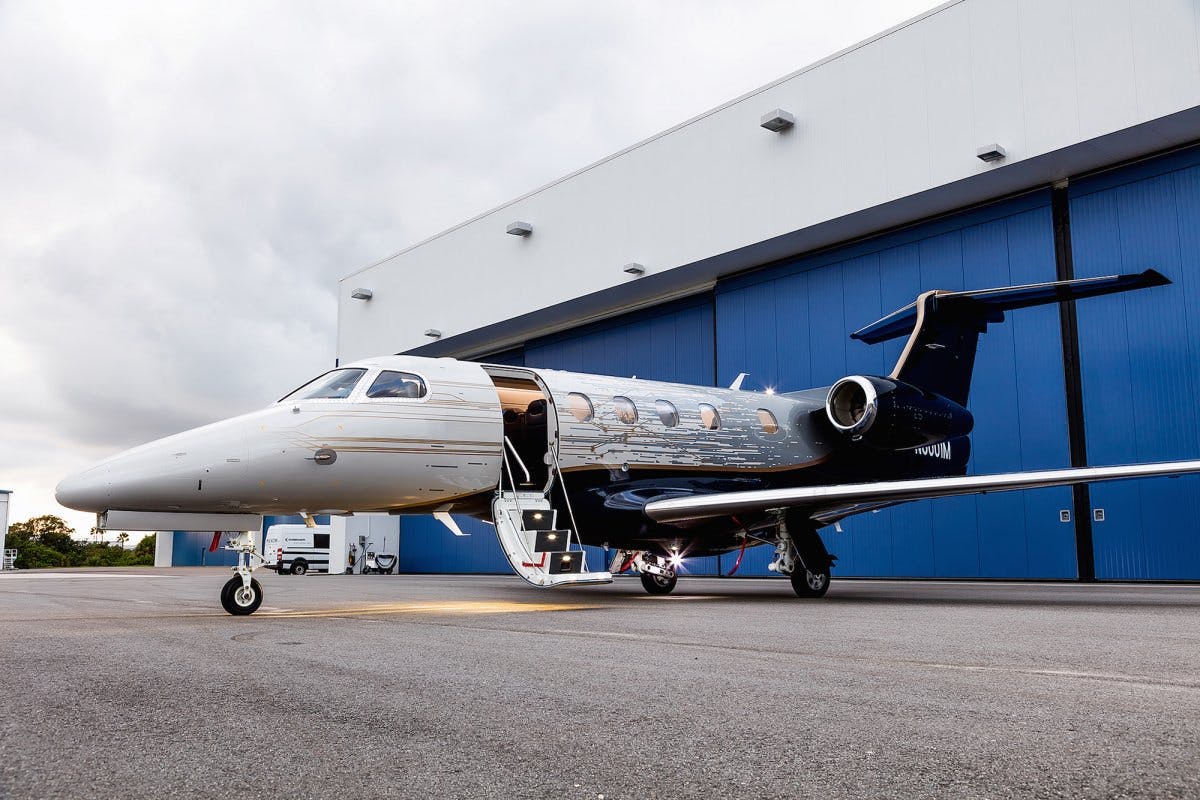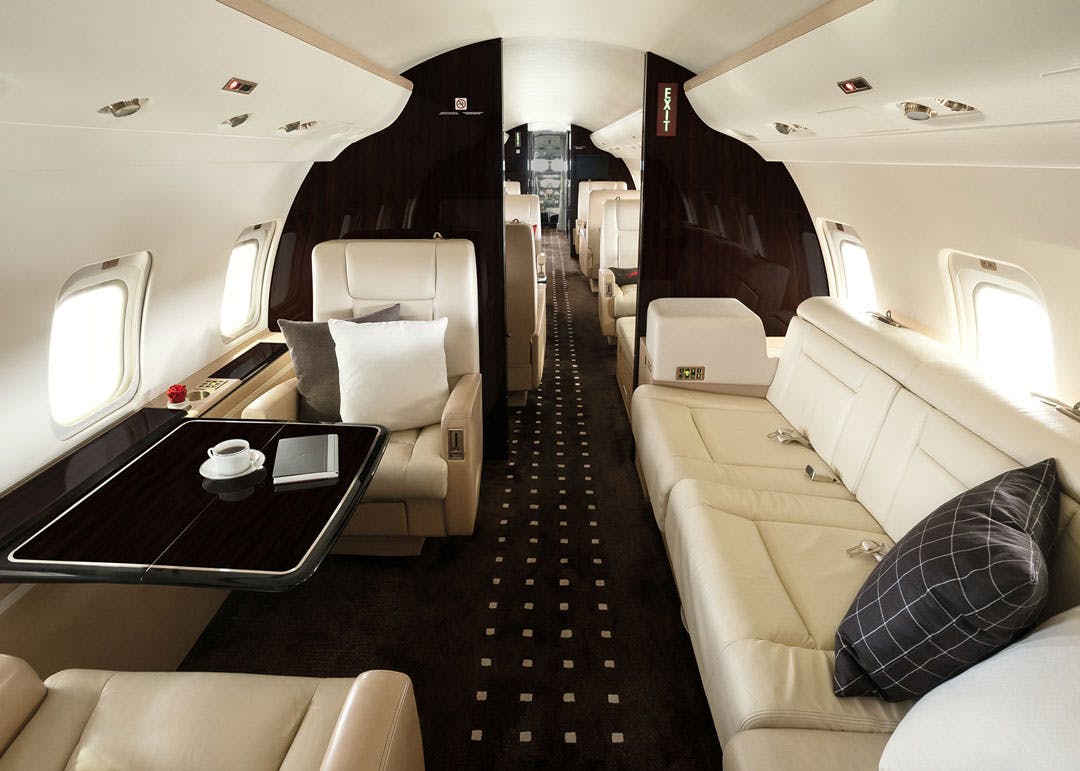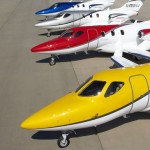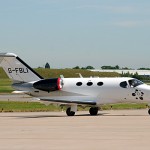Is a newer private jet better than an older one?
If you’re the type of person who likes to change car every year or so, you might think newer is also better when it comes to aircraft. But actually it’s not as clear cut as that.
Commercial aircraft are expensive to build, and built to last. In the airline industry it’s commonplace for an aircraft to remain in regular service for up to 30 years. For example the average age of British Airways’ 747 fleet is now over 20 years old. However the average age of jets chartered by PrivateFly customers in 2017 was just 6 years old.

Inspection and maintenance criteria are very strict in aviation and when aircraft go out of service, it’s usually because they have become uneconomical to run, rather than unsafe.
So whether to go for a newer or older aircraft is really a matter of preference and priorities, rather than safety. Here we weigh up the pros and cons.
Interior
In terms of cabin wow factor and comfort, a brand new aircraft packs a powerful punch. Ongoing developments in cabin systems and interior design mean private jets are getting more and more comfortable. The newest models come with advanced ergonomic seating, lower cabin altitude and enhanced onboard technology options.

But it’s key to take note of an aircraft’s date of refurbishment as well as its date of manufacture. Both are important considerations when weighing up charter options.
With steep depreciation on new aircraft values, there is a real trend these days for aircraft owners to buy a 3-5 year old aircraft at under 50% of the original purchase price. And with those savings the aircraft can be completely refurbished by a completion centre such as Duncan Aviation – to the exact specifications of the customer.
A refurbished aircraft can feel totally new inside, including new carpet; re-covered seats (or totally new seating); new panelling; and upgraded bathrooms or galleys in larger aircraft. The cabin and cockpit technology systems can also be upgraded, including adding wifi (which is now commonplace in many refurbished aircraft in the US, less so in Europe).
So some customers may prefer to choose a 10-year old aircraft that has a ‘box fresh’ interior, rather than a 3 or 4 year-old one, that hasn’t yet been refurbished. This usually comes at a lower charter price too.
Nextant’s approach takes this even further: Strip an aircraft right back to its original airframe, and then add new engines, avionics and cabin. This creates a new, modern aircraft, but with lower operating costs than a new rival. The Nextant 400XT/XTi is their most popular charter aircraft – a re-engineered Hawker/ Beechjet 400A. And they have also recently introduced the G90XT, a re-engineered King Air turboprop.
Performance
Newer aircraft generally perform more efficiently than older ones. But performance is not about safety, but more about range, speed and fuel-efficiency.
The big aircraft manufacturers know that range and speed are their headline differentiators. So a newer version of most aircraft, will be able to fly a bit further and faster than the original. Take Bombardier’s Global 7000 for example. Due to launch next year, it will extend the range of previous Globals, in order to go head-to-head with the Gulfstream G650ER, which has a range of 7,500nm.
Fuel-efficiency is another area where newer aircraft outperform their older counterparts, thanks to improved engine and wing design. And less fuel burn can mean lower costs.
But the aftermarket is addressing some of this, with add-ons such as hush kits and winglets, that can dramatically improve the performance of older aircraft. For example active winglets can be fitted to the popular Citation CJ jet series, – a 2012 model equipped with these can then perform well beyond a 2017 stock model.
For many clients these boundary-pushing factors aren’t major considerations. Lower fuel costs, or a faster journey time may not be worth the overall price premium of choosing a newer model. And for most clients an ultra long range won’t be necessary.
Price
Older aircraft almost always come at a lower charter price than newer ones. There are exceptions but usually the aircraft’s operator will set their hourly rate to reflect the aircraft’s age.
So while there are other variables around pricing, if all other things are equal you can expect to pay several thousand pounds less to charter an older aircraft, than a newer one of the same type.
For example we recently presented a client with the option of two Embraer Legacy 600s for a 7-night return, from London Farnborough to Chambery. The price for the aircraft manufactured in 2007 was 16% lower: €36,180, versus €43,200 for the newer one (2014). The 2007 aircraft had been refurbished in 2013 so its interior was very similar to the 2014 one.
Of course, some clients will be happy to pay a premium, simply because they prefer to fly on a newer aircraft. Or because they want to try out the latest model.
We see a difference between clients in different regions in their approach to aircraft age. Generally speaking, our clients in the US (where private aviation is more developed and clients are very informed about the market) are less concerned about flying on a new aircraft, than those in Europe or the Middle East. And the aftermarket is more developed there as a result.
For business customers, looking to impress clients or to hold a meeting onboard, connectivity and a pristine, modern interior can both be major priorities. But for many leisure customers a more cost-effective price can matter more.
Whatever your preferences, our Flight Team will always advise on different charter options for your flight. Contact us (24 hours) for advice or call +44 (0)20 7100 6960.
Related content

Can the new Learjet 75 Liberty unseat the Phenom 300?

The HondaJet is now available for charter



